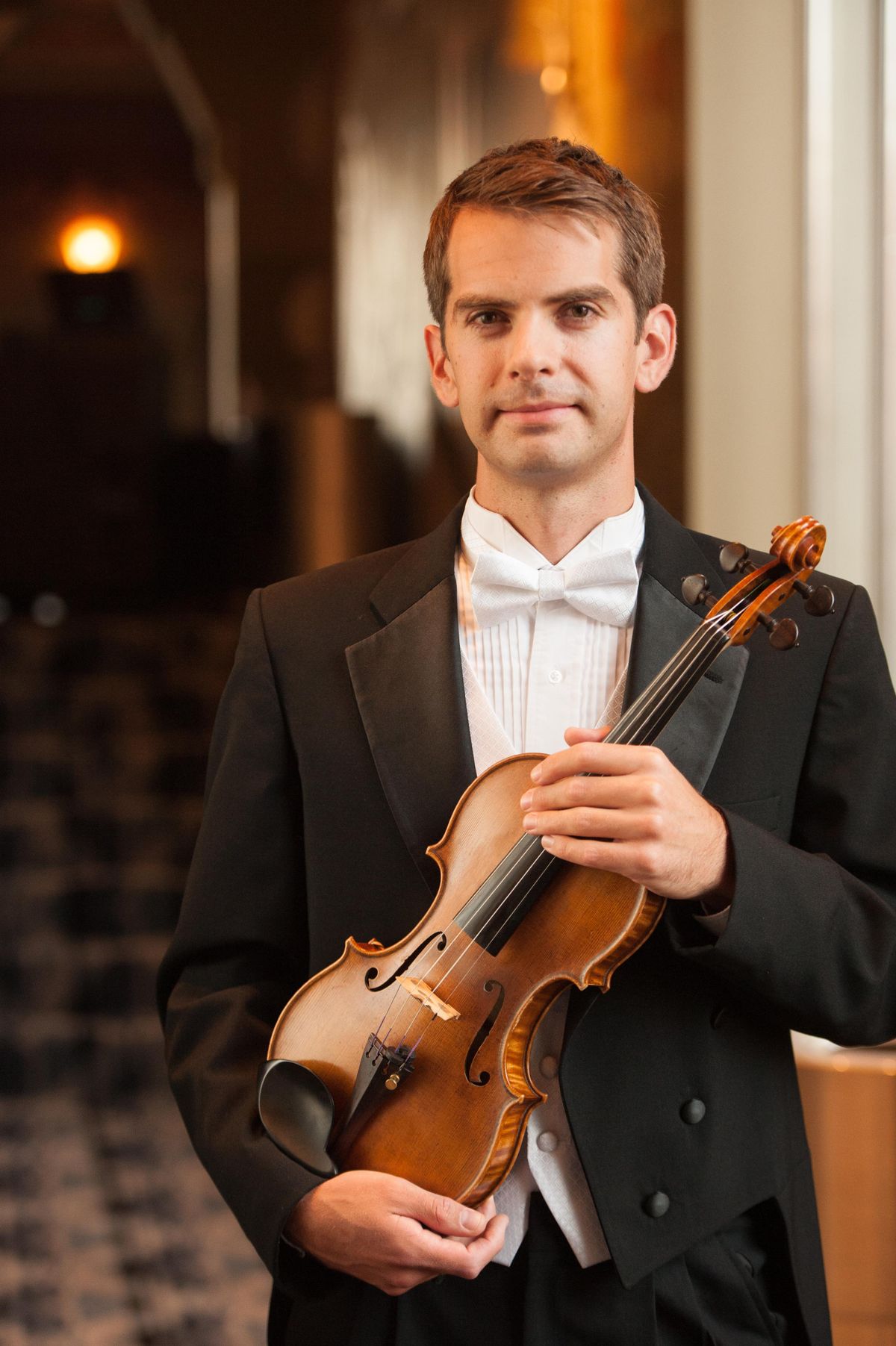Spokane musicians lend talents to soundtrack of ‘Gavagai’

Friday night, Rob Tregenza’s “Gavagai,” the experimental 2016 film, will be screened at the Magic Lantern Theater. Of particular interest is that the film’s soundtrack features the filmmaker’s daughter and her husband, both members of the Spokane Symphony Orchestra.
Earecka Tregenza-Moody (principal harp) and Jason Moody (first violin) composed and recorded the soundtrack and will be available for a Q&A session after the screening.
The movie follows a German businessman as he travels to Norway attempting to finish his wife’s Chinese translation of a series of poems.
Throughout the film, Tregenza weaves together his twin fascinations with the works of German philosopher Martin Heidegger, and Norwegian author and poet Tarjei Vesaas.
“‘Gavagai’ is about poetry and Heidegger/Hölderlin, Godard/Tarjei Vesaas as poets reaching into ‘the abyss,’” Tregenza explains in his director’s commentary. “The method of creation is to employ the language of a poet, Tarjei Vesaas, and the practice of cinema to uncover how Being and death can call for a different, more meditative event. Gavagai has its origin in thoughts on Being. We follow a forest path set forth by Martin Heidegger, not on a country lane in the Black Forest of Germany, but in Telemark, Norway.”
The film is concerned with the impossibility of perfect translation, the movement between media: most literally with a husband’s attempt to finish his wife’s work, and, more abstractly, the filmmaker’s cinematographic application of an unconventional Heideggerian time concept.
Tregenza-Moody explained how some of the more complex, philosophical aspects of the film are expressed without alienating the audience.
“It really asks the viewer to approach it with an open mind and a willingness to answer your own questions,” Tregenza-Moody said. “There’s a lot that isn’t explained.”
But, she continued, “the film itself is very straightforward in a way, in terms of the issues it’s dealing with. They’re so elemental. Grief and longing, these things are so fundamental to the human experience. You don’t need to sit down and read a philosophical treatise … we’ve all been through times of intense pain.”
The actual composition was fairly unusual as far as conventional soundtrack recording goes. Composing a film score on top of their symphony, teaching and various other performance commitments significantly narrowed the already-small time frame the couple had been given.
“Oftentimes we would get home from the symphony late, run down to the basement and just start playing,” Moody said.
But nothing encourages productivity like a deadline.
“The process was pretty organic actually,” Moody said. “We watched the movie a few times and then in talking with Rob we decided to focus on this idea of only putting music on the scenes where the memories and the ghost appear.”
After narrowing down the scored scenes everything started to flow.
“We’d push play on the laptop, I’d start the computer recording and Earecka would start to play,” Moody said. “I would more or less improvise to what I was seeing, what we were feeling as we were going on. We didn’t have really anything written out in terms of scoring. We would decide on a basic structure and then just go.”
During some of the more ambiguous scenes, Moody and Tregenza-Moody’s compositions were able to aid interpretation largely through basic musical-emotional cues.
“You sense and you see things that you might not understand because they’re not readily explained by the filmmaker,” Tregenza-Moody said. “Jason and I were, in a sense, trying to help with the music. Maybe suggest places of more understanding through the music so that the viewer might be aided in their process of wondering what is unfolding in front of them.”